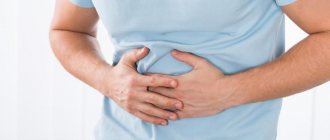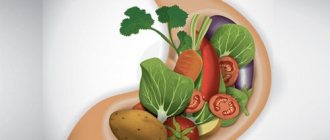What does orange stool mean in an adult, how to treat and what to do, reasons for orange stool: diet, medications or a digestive problem.
With a healthy intestine, the stool is formed, soft and easy to pass. Healthy brown stool of any shade means there are no problems with diet or digestion. But you should be a little alarmed if the feces change color, for example to orange.
Orange-colored stool may be red, yellow, brown, or green.
What causes orange stool
Orange-colored stool is most often caused by foods, supplements, or medications. Orange stool is usually harmless and is a temporary color change. Once the food is digested, the stool will return to brown.
Food
Often orange-based foods change the color of stool to orange. Beta-carotene gives food its orange color and colors stool. Beta-carotene is a type of carotenoid compound that can produce red, orange, or yellow colors. Beta-carotene is found in many vegetables, fruits, grains and oils, such as carrots and sweet potatoes.
Beta-carotene is a provitamin because it can be converted into vitamin A. Synthetic forms of beta-carotene are added as supplements. When eating food with this additive, the feces may turn orange. Food colorings used in orange blossom drinks may change the color of your stool.
Digestive problems
Digestive problems can change the color of your stool to orange. Brown stool is caused by bile, which is produced by the liver to aid digestion. If stool does not absorb enough bile, it may change color to light gray or yellowish. There may be short-term diarrhea.
In children, blocked bile ducts may cause stool to turn orange or gray.
Medicines
Medicines may turn stool orange or light-colored, such as the antibacterial refampicin. Medicines containing aluminum hydroxide (antacids) may cause stool to appear orange or gray.
Orange stool in infants and pregnant women
A similar orange color to a baby’s stool may appear after eating complementary foods made from “orange” foods, or if the mother’s breast milk is poorly absorbed or if there is an unsuitable formula. The baby’s digestive system is still improving and food coloring pigments are excreted almost unchanged, so the baby’s feces periodically acquire bright colors. It can also be a consequence of diseases.
If the baby’s general condition does not suffer, he is calm, eats and sleeps normally, there is no need to worry, after 2-3 days the child’s orange stool will change color to normal. But with any, even the slightest suspicion of pathology, you should immediately consult a doctor.
In pregnant women, stool can sometimes turn orange due to mechanical compression of the hepatic ducts. As a result, a deficiency of bile is created in the intestines, and during this period the woman tries more to consume foods rich in vitamins, including beta-carotene-rich vegetables and fruits. If this is not repeated orange diarrhea against the background of a deterioration in general health, there is no cause for alarm.
Some researchers believe that the reason for the red color of stool may be changes in hormonal levels during pregnancy, but this has not been experimentally confirmed.
How to treat orange stool
Treatment for orange-colored stool begins with nutrition and eliminating foods that are high in beta-carotene, such as carrots or sweet potatoes. Then replace these products with others and observe the effect. Typically, excess beta-carotene has a temporary effect on the intestines and does not require treatment.
If medications may turn stool orange and cause other symptoms. If you are taking a course of antibiotics, make an appointment with your doctor to change your medication. If you do not observe any other symptoms other than a change in color, then wait until the end of the course with the drug to see if the stool returns to a brown color.
The color of feces is directly related to a person’s diet and is a true indicator of his health. Quite often, adults do not even pay attention to the coloring of stool, unless this is accompanied by an increase in bowel movements or a change in consistency. And they do it in vain. If you notice yellow feces in the toilet, then you should carefully look into the cause of such staining, because they can be completely harmless and quite serious.
Feces are always the first indicator of changes in the body, so a little control of excrement will avoid many serious disorders of the body. In order to understand why yellow feces can be the norm, you need to understand what the coloring of feces depends on.
Reasons for the development of orange diarrhea
The color of stool can be influenced by many factors. Sometimes its character and shade changes due to dietary habits, and sometimes due to health conditions. Here are the main reasons for orange diarrhea:
- eating orange foods;
- high keratin content in your favorite dishes;
- use of certain medications;
- use of multivitamins.
All these reasons should not cause concern about your health. In most cases, bright orange diarrhea caused by simple changes in diet goes away in just a few days, leaving no unpleasant symptoms.
The following foods can cause yellow-orange stool:
- apricot;
- orange;
- carrot.
Any fruit or vegetable rich in beta-carotene, when consumed in large quantities, can cause orange stool.
However, in both adults and children, red, loose stools may indicate the development of internal diseases. If the day before a person did not consume any medications or foods high in beta-carotene, the reasons for the change in stool color may be as follows:
- hepatitis;
- stomach ulcer;
- kidney failure;
- gastritis;
- lung pathologies;
- hormonal imbalances;
- bladder dysfunction;
- damage to the liver and biliary tract;
- cystitis;
- cholelithiasis;
- pancreatic diseases.
Red liquid stools can vary in intensity. If changes in the color of stool are associated specifically with internal diseases, then the brightness indicates the degree of pathology. The richer the stool, the more the disease progresses.
If orange-colored diarrhea does not occur after eating food, self-medication can lead to serious disorders in the body and you should consult a doctor.
A newborn's stool may also take on an unusual color. Diarrhea in a child indicates that the body has not fully digested breast milk or that the formula used for artificial feeding is not suitable for the baby.
When a baby develops orange diarrhea, it means that intoxication is occurring in his body. The condition may be accompanied by high fever, nausea and vomiting.
Sometimes the yellow color of stool warns the parents of the baby that his liver and bile ducts are unhealthy. When more bile is produced than necessary, the character and color of the stool changes.
Sometimes the color of stool changes after Plantex. There is no need to worry, but you should discuss this with your pediatrician.
oponos.ru
If you suddenly notice that you have orange-colored stool, you will most likely be worried. But not in every situation this incident is actually a sign of some kind of disease. Quite often this can be interpreted for other reasons.
Attention! When you see orange-colored stool, you should not immediately try to make a medical diagnosis for yourself, unless you have a medical education as a gastroenterologist, infectious disease specialist, or other doctor who specializes in such problems.
If suddenly orange feces in your case are actually a symptom of some disease, then only a specialist can determine this accurately and correctly.
Attention! If the stool is different from the usual color, and this continues for more than two days, then you should definitely contact a medical professional.
The appearance of orange-colored stool should not be considered a disease if you have changed your diet, for example, orange-colored vegetables or fruits or other foods containing unsaturated carbohydrates have appeared in your diet. For example, this problem often occurs among those who often eat carrots or persimmons. They contain special dyes that, when entering the body, change the color of the stool to orange or shades close to it. This is a completely normal process and is not a pathology.
In addition to the foods described above, beta-carotenes (coloring pigments) are also found in the following foods: pumpkin, sea buckthorn oil, sweet potatoes, some salads, spinach and various herbs. The dye is not completely digested by the body, about 30%, since it has a fibrous structure. After the pigment has passed through the intestines, it is gradually converted into vitamin A. The amount of dye that the stomach digests directly depends on the amount of gastric juice (bile) in the body. Thus, children absorb beta-carotenes in a smaller amount than adults. The remaining 70% of the pigment is excreted through urine and feces, simultaneously coloring them orange.
Attention! Excessive intake of the chemical vitamin A essence may also cause your stool to turn orange. A similar effect occurs when taking multivitamins (drugs that contain many vitamins at the same time) without a prescription. If you use the drug “ Rifampicin ” (a drug prescribed to patients with tuberculosis, leprosy, gonorrhea or rabies), then in addition to the change in the color of the feces, the limbs and whites of the eyes may also turn yellow. The medicine has a strong effect on the liver, which is why this reaction occurs. This is especially noticeable if you have just started taking Rifampicin .
How to understand whether a change in stool color is a consequence of a change in diet and the use of new medications, or is there another reason? You just need to stop eating foods with unsaturated carbohydrates and suspend the course of treatment with multivitamins or Rifampicin for three days. If the color of the feces remains the same, then we can conclude that the problem lies elsewhere.
In what cases is yellow feces in an adult not a reason to worry?
- The dark brown color may be the result of a rich, varied diet with many ingredients.
- Orange feces are formed as a result of eating large amounts of carrots and pumpkin. Orange stool can also appear during a vegetarian diet.
- Light yellow stool may appear when a person is on a dairy diet.
- Almost black excrement is formed when eating large quantities of meat products.
It is better not to ignore other changes or the appearance of stool with mucus, but to consult a doctor. It should be noted that yellow mucus in the stool of an adult most often appears due to poor functioning of the gallbladder, which means that the process of digesting food takes place with an insufficient amount of enzymes.
Important. If changes in the color of the stool are associated with the intake of certain highly pigmented foods, then literally within 48 hours after stopping these foods, the excrement should turn brown. If this does not happen, then you won’t be able to figure it out without a specialist.
Causes of orange stool in adults
Orange feces are a clinical symptom of a certain disease of the internal organs, an inflammatory process, or a disorder in the functioning of the digestive organs.
Causes of orange stool
Orange stool is mainly a symptom of an internal disease that requires immediate treatment. But, in some cases, orange stool can be caused by eating foods with a large amount of keratin, multivitamins and medications. The color of the stool returns to normal within 2-3 days.
Pathological changes in the color of stool are often associated with diseases of the pancreas, liver, kidneys and biliary disorders. Orange stool in a child indicates the content of a large amount of bile pigments, which is associated with metabolic disorders. The color saturation of stool shows the stage of development of the disease or pathological process.
Often, orange stool in an infant may be the result of poor absorption of breast milk. Also, stool may have an unpleasant sour odor and be colored yellow, orange and brown when using artificial mixtures (a reaction to bilirubin appears).
If the cause of orange stool is problems with the biliary tract, then the pathological process is a consequence of excess bile production.
It should be noted that the orange color of stool in a child and an adult patient may be a consequence of infection and intoxication of the body . In this case, there is increased body temperature, chills, diarrhea, nausea and vomiting. Without proper treatment, poisoning leads to dehydration.
Intestinal failures and disturbances in the digestion of food can cause pathological changes in the color of stool, but they are usually short-term.
Types of diseases with orange stool
If the orange color of the stool is associated with the consumption of large amounts of fruits and vegetables containing keratins, as well as nutritional supplements and medications (rifampin, etc.), then after stopping their use, the color of the stool will normalize. In other cases, orange stool is a manifestation of various diseases, which include:
- hepatitis and other liver diseases;
- cystitis;
- disorders of urinary processes;
- disturbances in the outflow of bile;
- lung diseases;
- peptic ulcer, gastritis, colitis and other diseases of the digestive system;
- gallstones;
- hormonal disorders.
Treatment for orange stool
To treat diseases that cause orange stool, it is necessary to conduct a full diagnostic examination, determine the stage of the disease and the presence of complications. If the disease is infectious, immediate hospitalization is required. To recover from poisoning, correction of water balance and restoration of intestinal microflora are prescribed.
If there is orange stool, the doctor prescribes a special stool test , which is aimed at identifying the formed elements in it. Leukocytes and red blood cells in the stool indicate an inflammatory process in the intestines, and they can also be used to determine the presence of a purulent process.
If stones are detected in the gall bladder, surgery is prescribed to remove them. If an infection is detected in orange stool, then drug therapy is prescribed, including antibacterial, anti-inflammatory and restorative drugs. A course of strong antibiotics is necessary in the presence of severe infectious processes.
Orange stool is not normal for humans, unless it is a one-time occurrence caused by taking medications or certain foods. Lightening of feces towards orange indicates a problem in the gastrointestinal tract.
Causes of orange stool
Orange-colored feces are not always a cause for concern. Stercobilin is a pigment that colors feces, but in addition to it, the color is affected by a person’s diet, individual characteristics and the use of certain medications.
Mono-diets with foods that contain beta-carotene are another reason for orange-colored stool. These include carrots with pumpkin, cauliflower, sweet potatoes, sea buckthorn oil and others. Beta-carotene is not completely absorbed in the body, a maximum of 40 percent. This part is converted into vitamin A, and whatever remains is excreted from the body.
Also, the color of the biomaterial can be affected by high consumption of vitamin A, or rather its overdose. Some medications also affect the color of feces. An example of this is Rifampicin.
If changes in stool color do not stop after several days, you should consult a specialist.
Possible diseases
If it was found that the orange tint to the feces is given by not eating food the day before and not taking medications, possible causes may be hepatitis and other ailments associated with the liver, problems with the bile ducts, as well as stones in them.
The list of possible diseases also includes cystitis, disorders in the urinary system, hormonal imbalance, ulcers with gastritis, colitis and lung diseases.
The most common ailments are the following:
The peculiarity of the first disease is that it can be inherited. The coloring pigment enters directly into the blood vessels, and only then into the intestines.
The consequence of this is jaundice, as well as an orange coloration of the stool. To eliminate the disease, it is necessary to eat foods saturated with fats and eliminate bad habits, in particular alcohol.
Take care of the nervous system, avoid stress.
Source: https://okishechnike.com/info/kal-oranzhevogo-cveta-u-vzroslogo-prichiny/
Should I worry about yellowing stool during pregnancy?
While carrying a child, a woman’s body works at maximum speed, and all hidden resources are activated. Such intensive work leads to the fact that each organ experiences great stress. The digestive system undergoes a particularly difficult period. This is why there can be yellow stool during pregnancy, as well as other colors, without signaling any problems in the body. However, there is a group of problems that may be accompanied by yellowness of feces during pregnancy:
- Disorders of the pancreas.
- Liver disorders.
- Eating too fatty foods that interfere with the proper functioning of the digestive system.
All this is easily diagnosed and there are therapeutic programs developed specifically for pregnant girls. The main thing is to point out your problem to your doctor in a timely manner. Don’t be alarmed by changes in your stool, but keep an eye on them, and don’t hesitate to go to a specialist with the problem that’s bothering you. A timely reaction to any disorders in the body will allow you to get rid of them quickly and painlessly. If you found this article useful, please share it with other readers and leave a review. Sometimes this information can help someone stay healthy.
A change in the usual brown shades of stool to lighter ones makes us think about digestive disorders. Why did the stool become lighter? Is yellow stool serious or not? Let's talk about this in more detail.
Prevention
Prevention of intestinal disorders involves:
- compliance with hygiene rules,
- washing hands thoroughly after going to the toilet, visiting public places (especially during infectious diseases), before preparing food,
- washing dishes and kitchen utensils with hot water and detergent,
- separate placement of raw and cooked food,
- storing perishable food in the refrigerator,
- monitoring the expiration date of products,
- thoroughly frying and boiling food.
Orange diarrhea is an abnormal phenomenon that definitely needs to be paid attention to. Even if there are no other symptoms, it is worth seeing a doctor to find out the cause of the disorder. Prescribed therapy, a recommended diet and adherence to a drinking regime will help you cope with unpleasant symptoms quickly and without complications.
Previous entry Diarrhea in the second trimester of pregnancy - causes, dangers, treatment Next entry What to do if you have diarrhea at 37 weeks of pregnancy?
What determines the color of stool?
The color of stool is largely due to the presence of bilirubin, which is part of bile. It is released in the liver during the destruction of red blood cells, from where it enters the duodenum in the form of bile. The bolus of food moves through the small intestine, where food is absorbed. In the colon, water is absorbed, bilirubin is oxidized to stercobillin (it is what causes the darkening of stool), and formed stool is obtained from food debris, digestive enzymes and fragments.
Yellow stool without complaints
If you notice lightening of the fecal matter in the absence of deterioration in health, remember what exactly you ate 1-2 days ago. Eating a variety of foods requires long-term processing, and dark brown feces are released.
If your diet is characterized by a predominance of products of plant or dairy origin, this is always reflected in the color of the stool. The main foods that can turn stool yellow are:
- orange, carrots, melon, dried apricots, yellow apples, persimmons, pear (feces become orange);
- dairy products in large quantities (light brown feces);
- peas;
- bakery products for gluten intolerance (celiac disease).
If you have not had a craving for such food in recent days, then perhaps the yellow color of your stool is due to some medications. Yellowing of stool, as a side effect, is observed when taking antibiotics, anti-tuberculosis drugs, laxatives (Magnesium Sulfite, Senade), birth control pills, anti-gout drugs (Allopurinol), anti-inflammatory drugs, Fortrans.
The appearance of yellow stool in an adult is associated with the rapid passage of food (stressful situations, neuroses, depression) or a large amount of feces passing through the intestines per day.
In this case, a relative deficiency of the coloring pigment bilirubin occurs and yellow feces are released, sometimes with a greenish tint.
Fortrans is prescribed before the colonoscopy procedure. Yellow color of stool is normal. This drug has an enema effect when taken orally with large amounts of liquid. Gradually, the stool becomes lighter, and at the end yellow water is released.
Treatment for orange diarrhea
Therapy is prescribed after identifying the disease that provoked loose stools.
If the cause of orange diarrhea is an inflammatory process, then complex treatment is used, including taking anti-inflammatory medications, relieving symptoms and preventing dehydration. Medicines are prescribed by a doctor.
If the cause of diarrhea is an infectious lesion of the body, then hospitalization of the sick person is required. In a hospital setting, measures are taken to normalize the water-salt balance, prevent dehydration, and restore the intestinal microflora. To destroy pathogenic microorganisms that cause diarrhea, antibiotics and anti-inflammatory drugs are prescribed.
Auxiliary medications include sorbents, immunostimulants, and enzymes. Most often this is:
- "Regidron" - prevents dehydration,
- “Smecta” is a sorbent based on natural ingredients that eliminates excess gases, removes toxins from the digestive tract,
- "Creon" is an enzyme preparation for normalizing digestion,
- “Enterol” is an immunostimulant and probiotic, inhibits viral infection, normalizes intestinal microflora,
- “Enterofuril” is an intestinal antiseptic, eliminates manifestations of intoxication, and prevents complications.
An excellent fixing agent is rice water. For 2 tablespoons of rice you need to take 0.5 liters of water. Boil water, add cereal to it, bring to a boil again, cook for 40 minutes over low heat. Strain the finished product. Take 1/4 cup every 2 hours until the condition improves.
Food should be consumed often and in small portions. The menu should include fastening products:
- slimy porridges,
- baked apples and pears,
- bananas,
- vegetable broths,
- white flour toast.
With diarrhea, a large amount of fluid leaves the body. To replenish it, you need to drink as much water as possible (but only non-carbonated), herbal teas, fresh squeezed juices, fruit drinks, dried fruit compotes.
After eliminating diarrhea, you must adhere to dietary rules for another 2 weeks, drink enough water and herbal teas with a strengthening effect.
After curing diarrhea, you should thoroughly wash the toilet with a disinfectant and wash hygiene and bedding. You should not go to work and send your child to school immediately after illness - it is advisable to remain on sick leave for at least 2 more days.
Digestive difficulties: causes and treatment
If, along with the appearance of yellow stool, you have a stomach ache, or have complaints such as flatulence (boiling in the intestines), diarrhea or difficulty defecating, poor appetite, bitterness in the mouth, then this means the presence of serious disorders. It is especially dangerous if the pain is paroxysmal. Often these symptoms occur after eating fatty foods and alcohol.
A number of possible reasons for such complaints:
- hepatitis of any origin;
- fermentative dyspepsia;
- gallbladder diseases;
- compression of the bile duct,
- biliary dyskinesia;
- pancreas pathology;
- chronic constipation;
- metabolic diseases.
The liver is considered the laboratory of our body. It not only synthesizes various necessary substances, but also neutralizes toxic toxins and substances (for example, alcohol).
When it is damaged or overloaded, one or several functions may suffer.
Problems with the liver disrupt the processing of bilirubin, and it enters the intestines unprocessed. Such bilirubin is a bad dye, so light yellow, loose feces can often be released after alcohol.
Poorly digested pale gray feces are a common occurrence in people who eat very fatty meat products (usually men) or starchy carbohydrate foods (usually women). This disorder is called dyspepsia. Putrefactive dyspepsia is a “failure” in the breakdown of proteins. Carbohydrates that have not undergone the necessary enzymatic treatment cause fermentative dyspepsia. Fermented or rotten substances are absorbed in the intestines and have a toxic effect on the entire body. The cause of this disorder may be associated with any digestive organ.
Orange feces - causes, treatment, concomitant diseases
[adsp-pro-1]
A change in the color or consistency of stool may alert a person. But orange stool is not always a sign of some disease. The cause of changes in the color of feces can be the food and medications consumed. If the feces have changed due to a certain pathology, the appearance of an orange tint is accompanied by other signs signaling a disruption in the functioning of the body.
Features of nutrition and medications
The reason that stool appears orange may be due to eating foods that contain natural or artificial dyes. Also, the use of certain medications leads to the fact that in some cases people experience a change in the color of their stool.
Food
The most common cause of stool color change is eating large amounts of red or orange fruits or vegetables. May affect the color of stool:
- Persimmon.
- Sea buckthorn.
- Apricots.
- Sweet potato.
- Mango.
Carrots and pumpkin pulp color feces especially strongly. Spices cause orange-colored stool to change color. Turmeric, paprika, and red pepper give stool a bright color.
[adsp-pro-2]
Eating large amounts of foods containing synthetic dyes can also cause stool to change color. If a person eats too many orange vegetables or consumes them for a long time, orange feces in an adult may become liquid due to overeating.
Medicines
An overdose of vitamin A causes a person to have loose, orange-colored stools. Some multivitamins that contain carotene also contribute to a change in stool color if taken for a long period of time. Patients may notice yellowing of the skin on the palms and feet, and a change in the color of the whites of the eyes.
The stool turns orange if the patient takes the drug Rifampin to treat tuberculosis. Drugs such as Nifuroxazide and Furazolidone can also give an orange color to feces.
Disorders of the liver and pancreas
Pathologies of the pancreas, accompanied by impaired enzyme production, lead to orange diarrhea in a person.
Changes in the color of feces are caused by the following diseases:
- Pancreatitis . With pancreatitis, the pancreas does not produce enough enzymes. This leads to disruption of the digestive processes and the appearance of feces of an unnatural color, diluting the stool in an adult, staining the feces orange or yellow
- Cancer . With this pathology, the patient’s stool is unstable, and there is either constipation or diarrhea. Stool color: from red-orange to colorless.
[adsp-pro-3]
Also, liver diseases accompanied by impaired outflow or processing of bile can cause changes in stool color. Liquid orange stool is one of the symptoms of the following pathologies:
- Acute and chronic hepatitis . A feeling of heaviness in the right side of the abdomen, stabbing pain and frequent diarrhea are symptoms of the disease.
- Blockage of the biliary tract . The cause of impaired bile secretion may be stones, sand in the ducts, or inflammatory processes.
- Toxic reactions to taking medications, poisoning . With these pathologies, the number of red blood cells decreases, as they disintegrate and there is an increase in leukocytes in the blood.
Due to the increased breakdown of red blood cells, the level of free bilirubin in the blood increases in a person. An increase in the level of direct bilirubin in the blood leads to the development of jaundice. In this case, bile pigments, the appearance of which is associated with a violation of the processing of bilirubin by the liver, can be observed in both urine and feces.
Important! If a child’s orange liquid stool does not depend on nutrition, the baby complains of severe abdominal pain or cries for no reason, parents should be wary. Since such signs may indicate a problem with the liver or pancreas, you should consult a doctor as soon as possible.
Orange stool color in infants
The color of feces in a baby receiving only mother's milk varies from light yellow to bright orange and may even be greenish.
The color of feces depends on the diet of the nursing mother, the frequency of feeding, and whether the woman is taking any medications. Normally, newborn poop is mushy and may have large fractions.
Artificially produced feces are more formed and may even be brown in color.
In complementary-fed babies, the color of their stool changes to bright orange depending on the foods they eat. Pumpkin and carrots, as well as other vegetables containing dyes, strongly color feces, since they are not completely digested in children's immature intestines.
A pathology is considered to be a change in color when the unnatural shade of stool persists for several days, does not appear after eating food rich in carotenes, and also in cases where the child has loose stool.
Pathological orange coloration of feces in a baby is caused by:
- Liver diseases . With these ailments, the color of the baby's stool changes, diarrhea appears, the child becomes capricious, sleeps poorly, and refuses food.
- Cystitis . Orange stool appears in advanced cases when the child’s kidneys cannot cope with filtering toxins entering the body.
- Inflammatory processes in the intestines. Liquid orange stool in a newborn can be a sign of gastritis, dysbiosis, infection, or food allergies.
- Impaired flow of bile . A common cause of orange stool in infants. Due to the fact that bile is not processed to the required extent by gastric juice, it enters the stool unchanged, giving it a yellowish-orange color.
[adsp-pro-5]
Important! If blood appears in the stool in children or adults, it is imperative to seek medical help. Urgent assistance is also required for expectant mothers who have been suffering from diarrhea for more than three days.
Orange stool in pregnant women
A change in the color of feces in pregnant women is observed due to disturbances in the functioning of the gastrointestinal tract. Already at the end of the first trimester of pregnancy, the growing uterus begins to put pressure on nearby organs. The passage of digested food through the intestines is gradually disrupted, which leads to frequent constipation and sometimes diarrhea.
Also, the cause of orange diarrhea is stagnation of bile, provoked by the appearance of stones in the ducts, gall bladder, or pressure of the fetus on the digestive organs.
Treatment
If a patient's orange stool is a symptom of any disease, it is advisable to treat the ailment under the supervision of a gastroenterologist. The choice of medications depends on the nature of the disease, the patient’s age, and possible chronic pathologies.
In case of intoxication
With an increased content of bile in the body, poisoning may develop. The main signs of intoxication caused by stagnation of bile:
- Vomit.
- Orange diarrhea.
- Yellowing of the whites of the eyes.
- Bitter taste in the mouth.
- Decreased appetite.
- General state of weakness.
[adsp-pro-6]
Therapy includes:
- To relieve symptoms of intoxication, patients are prescribed adsorbents (Smecta, Activated carbon).
- To restore normal functioning of the gallbladder, the patient needs to take Sorbitol and Choleritin.
- Drotaverine, No-shpa, Papaverine will help reduce painful spasms.
[adsp-pro-7]
An accurate diagnosis is made after receiving the results of tests of urine, blood, and feces. If the doctor detects a lack of bile, the patient is recommended to take Allohol, Flacumin.
For hepatitis
If the cause of orange diarrhea is hepatitis, treatment must be carried out under the supervision of a specialist. The patient is not only prescribed drug therapy, but also a strict diet is recommended: spicy, salty, pickled, and fatty foods are excluded from the diet.
The main treatment for the presence of orange stool in a patient with hepatitis is to stabilize the liver. Appointed:
- Antiviral drugs (for viral hepatitis).
- Hepatoprotectors (Ademetionine, Essentiale-Forte, Rezalut, Karsil).
- Glucose.
- Immunomodulators.
- Vitamins.
Important! Changing the nature of nutrition during hepatitis is of great importance. In patients who take medications but do not follow a diet, indigestion persists longer.
For pancreatitis
A strict diet is also required for this disease, especially in the presence of purulent pancreatitis. The acute form of the pathology requires treatment in a hospital setting. Chronic pancreatitis, accompanied by loose stools, can be treated at home under the supervision of a doctor.
The patient is prescribed:
- Replacement enzymes: Mezim, Creon, Festal, Pancreatin.
- Antispasmodics: Papaverine, No-shpa.
- Enterosorbents for relieving intoxication: Enterosgel, Polysorb.
- Preparations for restoring intestinal microflora: Enterol, Bifidumbacterin, Bifiform.
- Vitamins and microelements.
If the development of illness is caused by E. coli or a viral infection, the patient may be prescribed antibiotics and antimicrobial drugs.
Orange stool is not always a sign of pathology. But in order to exclude possible diseases, you should consult a doctor at the first symptoms of intestinal ailment. Do not self-medicate; many diseases are easier to cure at the very beginning.
[adsp-pro-9] ( 4 4.50 out of 5) Loading…
Source: https://OtPonosa.com/simptomy/oranzhevyy-kal.html
Lack of digestive enzymes
Colorless or yellow-white feces are observed when the process of bile entering the intestines is disrupted. Moreover, the more serious the problem, the lighter the stool. Obstructions can be all the way from the gallbladder to the duodenum. Impaired bile expulsion occurs in the following cases:
- dyskinesia of the gallbladder (too strong or, conversely, weak contraction);
- constipation (creates tension in the intestinal wall, making it difficult to secrete bile);
- cholecystitis;
- condition after removal of the gallbladder (cholecysteectomy);
- stones in the gallbladder or its ducts;
- compression of the bile duct by the enlarged head of the pancreas (tumor, edema, inflammation) lying next door.
A characteristic combination of these disorders is light yellow stool and dark urine. This means that bilirubin, instead of entering the intestines, is absorbed into the blood and excreted in the urine.
After removal of the gallbladder, the control of bile flow is impaired, so some portions of stool may be lighter than others. With cholecystitis, as well as cholelithiasis, in addition to the discharge of yellow-white feces, sharp pain is observed under the ribs on the right side after alcohol or fatty foods.
When consuming a large amount of fats or their breakdown is impaired (decreased activity of the pancreas), we observe loose yellow feces with the presence of a gray coating. This type of fatty, oily stool is called steatorrhea. Undigested fat in the intestines envelops the food bolus and prevents enzymes from breaking down proteins and carbohydrates. Therefore, with steatorrhea, creatorrhea often occurs - insufficient digestion of muscle fibers. Feces with pancreatitis have a characteristic shade of gray-green color and are almost not washed off.
Orange blood in stool
Blood is red, but when it enters the upper digestive tract and passes through the intestines, the stool may become black and tarry. This type of stool is known as melanoma. Likewise, if bleeding occurs in the lower intestines, the stool may be red in color. In the latter case, it can sometimes be seen as an orange color when blood mixes with other substances or strong pigments in food to change the red color to an orange hue.
Orange blood in stool sometimes occurs when mixed with other substances or strong pigments in food
For example, bilirubin is bright yellow and is produced by the breakdown of red blood cells in the body. This bilirubin is excreted in bile, which is usually yellow-green in color. In fact, this bilirubin is broken down in the intestines and the stool turns characteristic brown. High levels of bilirubin in the stool that is not broken down by intestinal bacteria can result in yellow stools, and when blood is present, the stool may appear orange.
We recommend reading: Gases in the stomach causes and treatment.
Unhealthy gut?
Among the intestinal causes that lead to changes in the color of stool in an adult, Crohn's disease stands out. This is an autoimmune disease in which ulcers form in the intestinal mucosa. Crohn's disease is characterized by yellow-gray mushy stool, often foul-smelling with white flecks. If you see balls or lumps in white stool, and the stool is formed, then the reasons for such inclusions may also be:
- inflammation of the colon (mucus with white inclusions);
- antibiotics;
- candidiasis (veins of fungal colonies resemble a whitish coating);
- dead pinworms.
Pasty stool in adults is observed with intestinal infections of viral origin. The most common causative agent of this infection is rotavirus. You can “catch” it by consuming dairy products or by contact with a sick person. Rotavirus also causes acute respiratory infections, so you can get sick by getting infected by sneezing. The disease begins as a regular flu, and then the same symptoms occur as with gastritis or enteritis. This is seething in the stomach, with pain of unclear location and varying intensity, belching. In addition, high fever occurs, and most importantly, vomiting and diarrhea.
Features of nutrition and medications
The reason that stool appears orange may be due to eating foods that contain natural or artificial dyes. Also, the use of certain medications leads to the fact that in some cases people experience a change in the color of their stool.
Food
The most common cause of stool color change is eating large amounts of red or orange fruits or vegetables. May affect the color of stool:
- Persimmon.
- Sea buckthorn.
- Apricots.
- Sweet potato.
- Mango.
Carrots and pumpkin pulp color feces especially strongly. Spices cause orange-colored stool to change color. Turmeric, paprika, and red pepper give stool a bright color.
Eating large amounts of foods containing synthetic dyes can also cause stool to change color. If a person eats too many orange vegetables or consumes them for a long time, orange feces in an adult may become liquid due to overeating.
Medicines
An overdose of vitamin A causes a person to have loose, orange-colored stools. Some multivitamins that contain carotene also contribute to a change in stool color if taken for a long period of time. Patients may notice yellowing of the skin on the palms and feet, and a change in the color of the whites of the eyes.
The stool turns orange if the patient takes the drug Rifampin to treat tuberculosis. Drugs such as Nifuroxazide and Furazolidone can also give an orange color to feces.











